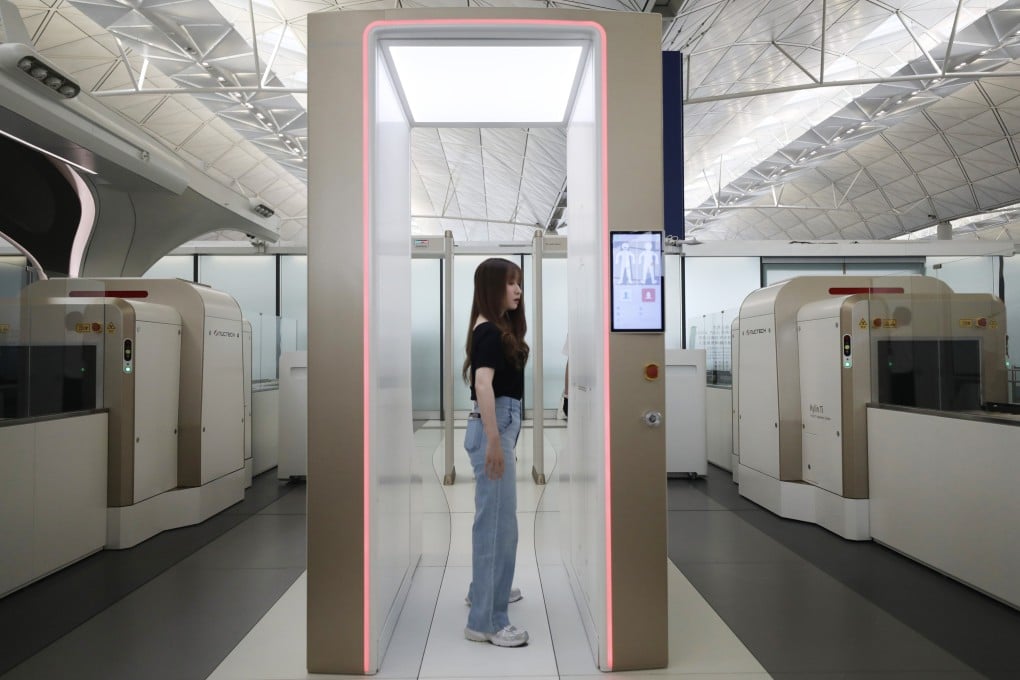Explainer | Why Hong Kong air passengers can expect speedier check-in, hassle-free security screening
- The Post lists new Airport Authority measures to be introduced from Tuesday, covering check-in to boarding of flights

From checking-in to boarding flights, the Post lists the measures the Airport Authority has adopted to create a more hassle-free process.
1. Checking-in
The airport’s Flight Token, a biometrics technology, allows departing passengers to scan their passports and complete check-in procedures at self-service kiosks in the departure hall.
This creates a biometric token containing information of passengers’ passport and boarding pass.
Passengers can then move to self bag drop counters, scan their faces through a camera to validate their identities against the token. Here, they can check-in their bags after printing and securing their luggage tags.
Travellers will only need to scan their faces again at the e-security gates and e-boarding gates. The will not need to show their travel documents and boarding passes again.